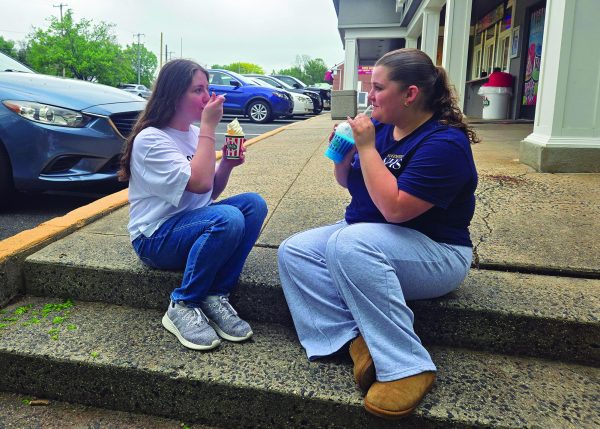Teen life representation changes across the pond
Using different color schemes, themes and tones, the United Kingdom and the United States have very different portrayals of the ways teens live. The TV shows “Euphoria” and “Sex Education” show the extreme sides of this.
To give their audience a peek into what high school is like, producers often place emphasis on certain elements to provoke emotions and perspective; these styles differ between the United States and the United Kingdom.
HBOmax’s show “Euphoria” is often discussed for its portrayal of drug usage in high school and the darkness that it displays. Many high school students believe that it is accurate in content, but not in intensity.
“I feel like it’s a little bit over exaggerated but it’s pretty accurate,” sophomore Lydia Hwang said.
According to Hwang, the show places more emphasis on drug usage than regularly encountered in a suburban high school but believes the show uses that to achieve its goal. Hwang feels like part of the point of the show is to highlight teen struggles, which it does through over-emphasis.
Netflix UK’s show “Sex Education” sets a similar scene to “Euphoria”, with a goal to highlight the sexual health of teens.
According to aspiring film student Anna Roman, “Sex Education” uses realistic characters to address problems that teens struggle with. “[There is] a lot of stuff about fears of sex and how it’s not always perfect,” Roman said. “Mental health isn’t always perfect and like relationships don’t always work out how we want them to.”
Roman believes that the UK show used young-looking actors who weren’t perfectly conventionally attractive, which gave teen viewers the ability to easily relate.
“Euphoria” uses glamorization and dramatization to showcase problems teenages encounter while maintaining extreme characters that are almost caricaturistic in nature.
Roman believes that this is demonstrated in their portrayal of the characters’ experience with romance. She feels that in “Euphoria”, many of the characters are adult in their experiences, whereas in “Sex Education” it is more realistic to what a high school student understands.
“‘Sex Education’ approaches it from more of an innocent standpoint where people are still trying to try to figure out their bodies because they’re still teenagers,” Roman said.
According to sophomore Claudia Winebrenner “Sex Education” has a comedic tone that in many cases accurately depicts the life of a teenager. To her, “Euphoria” is very extreme and often takes a serious tone on issues.
“They tried to make [“Sex Education”] more comical,” Winebrenner said, “versus “Euphoria”, which took a very dramatic look into like teen life.”
Winebrenner believes that “Euphoria” took a microscope to teenagers’ problems, amplifying them to begin a conversation about modern young adults’ problems.
“It’s important to do that because there are teens who struggle with drug abuse and toxic relationships and things like that,” Winebrenner said.
Hwang believes that the show has an important purpose in showing that many teens’ lives are darker than people would expect.
“I like how exaggerated the show is because it focuses on the parts that some people tend to say ‘oh, that’s not true,’” Hwang said. “I feel like the show did a really good job of over exaggerating it to show that it does happen to people. We just don’t see it all the time.”
Roman believes that “Sex Education” has a similar tone to many other shows in the UK that have bland visuals and dry humor.
“The shots are kind of duller and darker,” Roman said. “They kind of keep it to what life actually looks like.”
Roman contrasts this to American cinematography, which often is artificial feeling.
“In America, we love these big bright shiny shots with huge, beautiful sets because it’s the American dream,” Roman said. “We like to have things fabricated, but I feel like the UK is a lot more realistic







